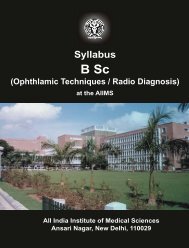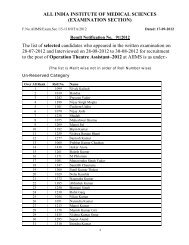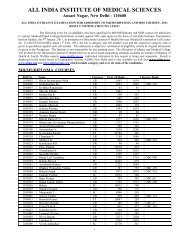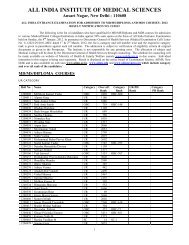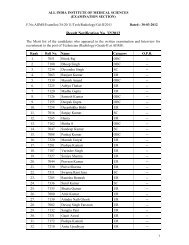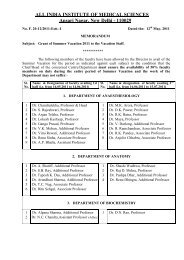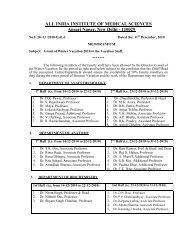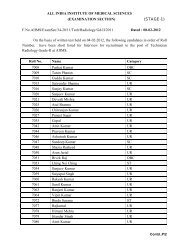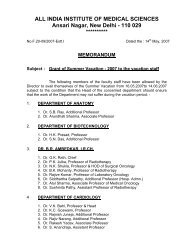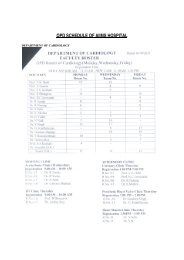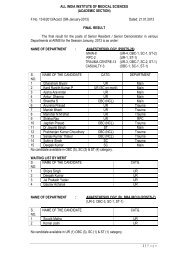Manual for long-term pharmacotherapy - All India Institute of Medical ...
Manual for long-term pharmacotherapy - All India Institute of Medical ...
Manual for long-term pharmacotherapy - All India Institute of Medical ...
Create successful ePaper yourself
Turn your PDF publications into a flip-book with our unique Google optimized e-Paper software.
Pharmacodynamics<br />
Naltrexone is a non-specific opiate antagonist that binds to all three opiate receptors sites (��) �as<br />
a function <strong>of</strong><br />
dose administered.<br />
The pharmacological duration <strong>of</strong> naltrexone is <strong>long</strong>er than might be predicted by the plasma kinetics. The plasma<br />
half-life <strong>of</strong> naltrexone is 4 hours, but the duration <strong>of</strong> opioid receptor blockade is much higher and a 50 mg dose <strong>of</strong><br />
naltrexone blocks 25 mg <strong>of</strong> heroin <strong>for</strong> 24 hours, 100 mg <strong>for</strong> 48 hours and 150 mg <strong>for</strong> 72 hours. This<br />
pharmacodynamic property <strong>of</strong> naltrexone makes it easy to be administered in simple and convenient<br />
regimens.<br />
Indications<br />
1. Maintenance treatment <strong>for</strong> detoxified patients with Opiate dependence.<br />
2. Prevent relapse in patients with Alcohol dependence<br />
3. Opiate detoxification protocols: It has established usefulness when combined with clonidine as part <strong>of</strong><br />
outpatient detoxification protocols.<br />
Preparations <strong>of</strong> Naltrexone<br />
50 mg oral tablet in package <strong>of</strong> 10 tablets<br />
Trade name : Naltima (Intas pharma), Noddict (Sun Pharma)<br />
Cost : Rs 40-45/tablet depending on the brand.<br />
Long-<strong>term</strong> use <strong>of</strong> naltrexone <strong>for</strong> opiate dependence( as a maintenance agent)<br />
Rationale <strong>for</strong> use<br />
As an opiate antagonist, naltrexone selectively competes with both exogenously administered opiates <strong>for</strong><br />
central nervous system (CNS) and non-CNS opiate receptors and blocks their activity. If an individual<br />
stabilized on opiate antagonist consumes an opiate agonist like heroin, he will not experience the euphoric<br />
effects as the opiate receptors are already blocked and hence not available <strong>for</strong> the opiate agonist to act. In this<br />
manner, over time, the drug seeking behaviour becomes extinct. This blockade eventually reduces craving and de-<br />
conditioning <strong>of</strong> cue related craving as patients are exposed to people, places and things <strong>for</strong>merly associated with<br />
opiate use while being protected from opiate effects. In addition due to the constant occupation <strong>of</strong> opiate<br />
receptors by antagonists, physical dependence is not re-established. Since the medication is without any<br />
addictive property, diversion is not an issue. Tolerance does not appear to develop to the antagonism <strong>of</strong> opioid<br />
effects even after more than one year <strong>of</strong> naltrexone ingestion. Cravings <strong>for</strong> opiates, opiate seeking and using<br />
behaviour, if viewed as conditioned responses, should then extinguish as a consequence <strong>of</strong> not being<br />
rein<strong>for</strong>ced.<br />
39




